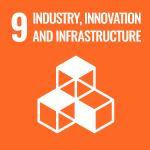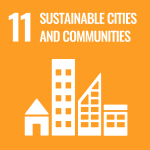


GEN1000 for students admitted to Year 1 before AY2025/26, Year 2 before AY2026/27, or Year 3 before AY2027/28, except with the permission of the Module Coordinator
N/A
This course provides students with an understanding of virtual reality and its application to the society. The principles of the virtual reality, augmented reality and multimedia technologies and their applications to the community and business operations environment will be
introduced. Through a combination of lectures, class discussion, hands-on demos and exercises, in-depth topic presentations, and diverse readings from the current literature, students will be exposed to a wide range of stimulating and inspirable cross-disciplinary research in the broadly defined fields of virtual and augmented reality, 3D user interaction and spatial user interfaces.
Upon completion of this module, students should be able to:
1. Introduction to Virtual Reality and Meta Technologies
1.1 Fundamental concepts and history of virtual reality, augmented reality and Metaverse
1.2 Immersion and interactivity of virtual reality and meta technologies
1.3 Accessories and equipment
2. Impact of Virtual Reality and Metaverse to the society
2.1 Role of virtual reality and Metaverse in human civilisation
2.2 Sociological, cultural and ethical impact
2.3 Impact on science and technology development
3. Basic concepts in 3D Virtual Reality model building
3.1 Concepts on perception modalities, space and time
3.2 Principles of 2D and 3D user-interfaces
3.3 Concepts of texturing, lighting and particle system
4. Developing Virtual Reality scenes
4.1 Assets, pictures, video and audio import
4.2 3D scenes and object building
4.3 Virtual reality animation and visual editing
5. Interactive features and character setup
5.1 Unity physics and motions
5.2 Player controller and 3D object control concept
5.3 Character setup and interactions
6. Virtual Reality and Metaverse – Devices integration
6.1 Accessories, equipment, software, hardware and user interface
6.2 Mobile devices set up
6.3 Build and export virtual reality
7. Cave Automatic Virtual Environment (CAVE)
7.1 Fundamental concepts and types of CAVE
7.2 Appreciation of CAVE applications
7.3 Conversion of 3D virtual reality scenes and interaction setup in CAVE
8. Application development in Virtual Reality and Metaverse
8.1 Education, language, cultural preservation and entertainment
8.2 Business, finance, healthcare and medical support
8.3 Multidisciplinary applications
9. Future of Virtual Reality and Metaverse
9.1 Trends in Virtual Reality, Augmented Reality, Mixed Reality and Metaverse
9.2 Development trends in hardware, software and applications
9.3 Integration of virtual reality with robotics and big data analytics
1. Class Participation (10%)
2. Assignment (30%)
3. Test (30%)
4. Group Project (30%)